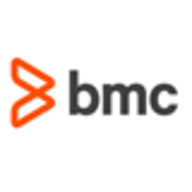

BMC Compuware ThruPut Manager and Onit operate in distinct tech environments, with ThruPut Manager having the upper hand in IT operations efficiency and Onit in legal operations efficiency.
Features: ThruPut Manager offers workload automation, optimization capabilities, and system performance enhancements. Onit provides task automation, workflow management, and contract lifecycle management. Both focus on automation but in different areas.
Ease of Deployment and Customer Service: ThruPut Manager integrates seamlessly with mainframe systems aiding IT teams, whereas Onit's cloud-based model provides flexibility and reduced infrastructure needs. Customer support is strong, favoring agile deployment in both cases but differing in system integration versus flexibility.
Pricing and ROI: ThruPut Manager has higher initial setup costs due to mainframe integration but offers significant ROI through resource management. Onit’s SaaS model is more cost-effective upfront, with rapid ROI via streamlined operations and reduced overhead, each aligned with its value proposition.
BMC Compuware ThruPut Manager automates batch job scheduling, optimizes mainframe workload management, and enhances job processing efficiency. It reduces CPU consumption, improves throughput, and provides detailed reporting, prioritizing jobs based on business needs.
BMC Compuware ThruPut Manager is known for its capability to streamline complex systems, allowing seamless integration with existing mainframe environments. It plays a crucial role in reducing operational costs and minimizing manual interventions. Users highlight its workload automation, intelligent resource management, real-time monitoring, and robust analytics features. Despite its advanced functionalities, there are areas needing enhancements such as better automation capabilities, clearer documentation, and an intuitive setup process. More comprehensive training resources and improved technical support are also needed.
What are the key features of BMC Compuware ThruPut Manager?BMC Compuware ThruPut Manager is implemented across various industries to streamline mainframe operations. Financial sectors utilize it for efficient transaction processing, telecom companies for managing large-scale data, and retail businesses for handling extensive inventory and sales operations. Its ability to integrate with existing systems makes it adaptable to specific industry requirements.
Onit is used for automating workflows and managing compliance tasks. Enterprises utilize Onit's customizable platform to streamline contract management, handle complex processes, track legal matters, and ensure regulatory adherence.
Known for its ease of use and customization, Onit's platform simplifies workflows and integration, making it scalable to fit diverse scenarios. It enhances efficiency and collaboration within teams through process streamlining. Valuable insights are provided by the platform's robust reporting and analytics features. Despite its strengths, users note the need for improved integration, more responsive customer support, better reporting, occasional slowness, and a steeper learning curve for new users, suggesting a need for more intuitive design and better training resources.
What are Onit's most important features?Onit is widely adopted across industries, including legal, healthcare, finance, and manufacturing. In legal professions, it manages contract lifecycles and compliance tasks. Healthcare entities use it to ensure regulatory compliance and streamline administrative workflows. Financial institutions employ Onit for complex process automation and risk management. Manufacturing firms benefit from its customizable workflows to handle compliance, contracts, and operational efficiency.
We monitor all Workload Automation reviews to prevent fraudulent reviews and keep review quality high. We do not post reviews by company employees or direct competitors. We validate each review for authenticity via cross-reference with LinkedIn, and personal follow-up with the reviewer when necessary.